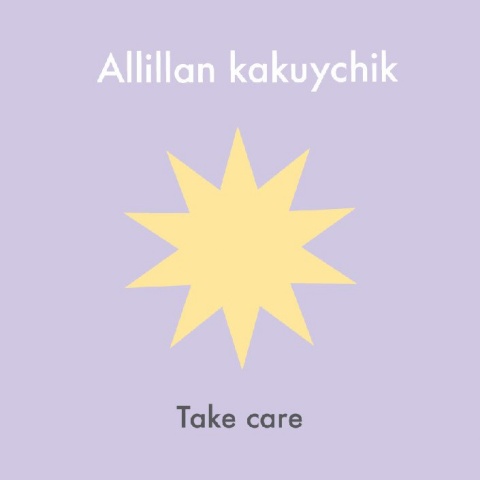Shana Inofuentes ’00 harnesses the power of social media for Indigenous language preservation.
Columbia College | Columbia University in the City of New York
Shana Inofuentes ’00 harnesses the power of social media for Indigenous language preservation.

The Quechua people are an Indigenous community from the Andean region of South America, which stretches from Peru through Bolivia and into Chile. Inofuentes is on a mission to keep Quechua — Bolivia’s second-most common language, with approximately 2.5 million speakers — vibrant and growing among the Bolivian diaspora. To that end she co-founded The Quechua Project, which places Indigenous pride at the forefront of social media with regular posts and stories that share Quechua language and culture with its eager followers.
Why Instagram? “I think it’s very important not to place us in the past,” Inofuentes says. “I can’t tell you how many times I read about Indigenous people in the past tense, like, ‘Our people used to, or we used to.’ It’s the idea that we’re relegated to vanishing into the past because we’re prehistoric, and not compatible with modernity.”
And what’s more modern than apps? “Something we like to say in The Quechua Project is that it’s not about going back,” she says. “It’s about moving forward — without the baggage.”
Inofuentes grew up just outside of Washington, D.C., which is home to the United States’s largest Bolivian diaspora (approximately 300,000 people of Bolivian descent live in the D.C. metro area). She says that the community is extremely tight knit, with very active pueblo organizations (community groups tied to specific regions of Bolivia) keeping people strongly connected to their homeland. The Quechua Project grew out of that community’s yearly carnavales, a months-long holiday that celebrates the harvest. Each Saturday, a different pueblo hosts the others for a day of singing, dancing and food. During that time, Indigenous languages like Quechua are ubiquitous; says Inofuentes, “If you go to a party or festival like that, which happens all spring and part of winter, you’re going to hear Quechua — it’s pervasive.”

Inofuentes, wearing a Columbia sweatshirt and a traditional aguayo wrap, harvests potatoes in the Bolivian Altiplano, with the revered Illampu mountain in the background.
EBER MIRANDA, NACIÓN RAP
The Quechua Project was co-founded by four Bolivian-American women from the D.C. area: Inofuentes, María Luz “K’ancha” Coco, Mónica Flores and Jennifer Albarracin Moya. Inofuentes met Coco, the project’s Quechua language specialist, during carnavales in 2018. But it wasn’t until summer 2019 — when the two had an apthapi (a meal with a focus on sharing food) with Flores — that they struck upon the idea of using media to revitalize Quechua use in the diaspora. That September, Inofuentes reached out to artist and photographer Albarracin Moya to ask her to contribute her expertise in the visual arts. The foursome decided that Instagram, with its focus on photos and short videos, was the perfect vehicle to showcase the beauty of Quechua — the app’s quick, digestible bites are ideal for the younger generation.
The Quechua Project launched online in September 2020, and quickly began growing followers. Comments on posts are ebullient: “I love this way of learning Quechua!”; “I love this movement.”; “I needed to read this. Thank you.”

“In order to create a generation of people from Indigenous heritage like ours, who are going to be empowered to contribute to racial justice and a better world, they need to feel empowered.”
So what does a typical Quechua Project Instagram post look like? Some are educational, teaching Quechua phrases like Kusikuy kay p’unchaypi (“Be happy today”) or Jamuy mikhurikunki (“Come eat”); some highlight the diaspora community through videos celebrating carnavales events; and others showcase Indigenous pride, like a series on ch’uñu — a preserved potato dish — and ch’uñuchay, the uniquely Indigenous process of creating the ch’uñu, which relies on the harsh Andean altiplano environment (freezing nights, hot days) for the preservation technique. The posts use a mix of English, Spanish and Quechua in order to reach their younger U.S.-based followers, who might not be fluent in Quechua but still identify with the culture or are interested in connecting with their roots. “[It’s about] embracing who we are and our various intersectional identities and allowing people to bring their whole selves to the table,” Inofuentes says.

In addition to The Quechua Project’s growing Instagram presence, the co-founders are conducting a survey of D.C.’s Bolivian diaspora to gather basic data about Indigenous language use in the community. Inofuentes, a Latin American studies and environmental science double major at the College, earned an M.A. from Georgetown in communications, culture and technology in 2021; she worked with faculty there to develop the survey. She plans to use the results to guide the project’s strategies to support the survival of Quechua in the D.C. metro area. “The fact that it’s research by us, for us is very powerful,” she says. “It’s not an extractive model of research.”
Adds Coco, “Knowing and working with Shana makes it so that things aren’t so pesados,” [literally “heavy,” but has connotations of “difficult”]. “Maybe because we flow together — I’ve learned a lot working with her.”

“Something like Instagram can seem so intangible and not impactful, but it is!” Inofuentes says. “This is the fuel to a certain kind of fire that I hope will grow — the untapping of our inherent power, our healing into the future after colonialism. We’d like to inspire a generation of people who are secure in who they are in their indigeneity.”

Published three times a year by Columbia College for alumni, students, faculty, parents and friends.
Columbia Alumni Center
622 W. 113th St., MC 4530, 6th Fl.
New York, NY 10025
212-851-7852
cct@columbia.edu

Columbia Alumni Center
622 W. 113th St., MC 4530, 4th Fl.
New York, NY 10025
212-851-7488
ccalumni@columbia.edu